73
DAG representation for basic blocks
A DAG for basic block is a directed acyclic graph with the following labels on nodes:
- The leaves of graph are labeled by unique identifier and that identifier can be variable names or constants.
- Interior nodes of the graph is labeled by an operator symbol.
- Nodes are also given a sequence of identifiers for labels to store the computed value.
- DAGs are a type of data structure. It is used to implement transformations on basic blocks.
- DAG provides a good way to determine the common sub-expression.
- It gives a picture representation of how the value computed by the statement is used in subsequent statements.
Algorithm for construction of DAG
Input:It contains a basic block
Output: It contains the following information:
- Each node contains a label. For leaves, the label is an identifier.
- Each node contains a list of attached identifiers to hold the computed values.
Method:
Step 1:
If y operand is undefined then create node(y).
If z operand is undefined then for case(i) create node(z).
Step 2:
For case(i), create node(OP) whose right child is node(z) and left child is node(y).
For case(ii), check whether there is node(OP) with one child node(y).
For case(iii), node n will be node(y).
Output:
For node(x) delete x from the list of identifiers. Append x to attached identifiers list for the node n found in step 2. Finally set node(x) to n.
Example:
Consider the following three address statement:
Stages in DAG Construction:
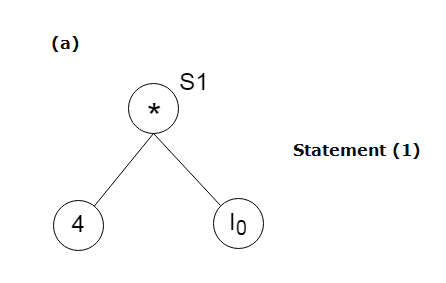
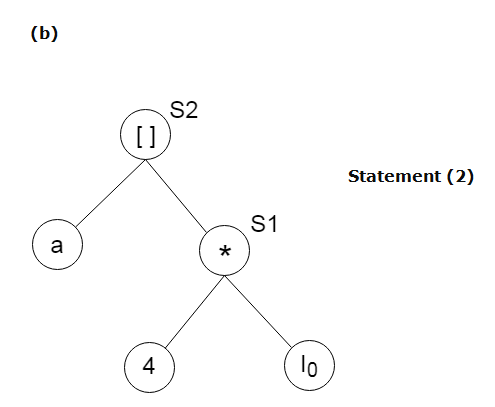
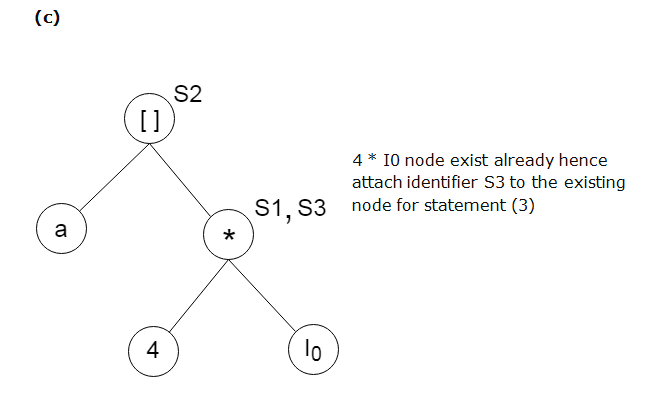
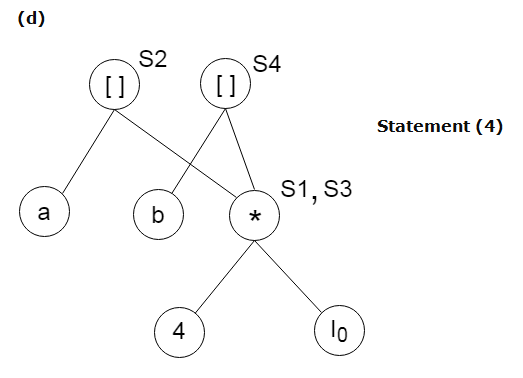
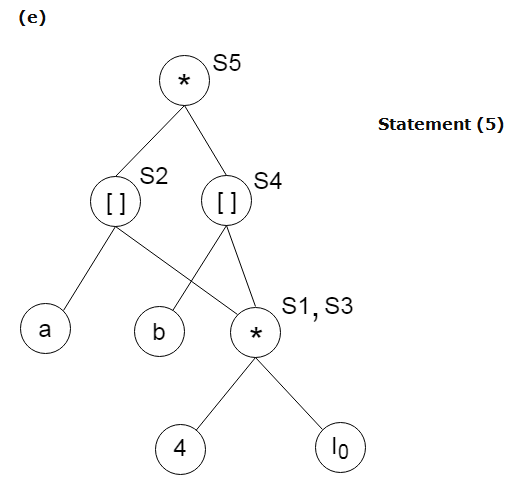
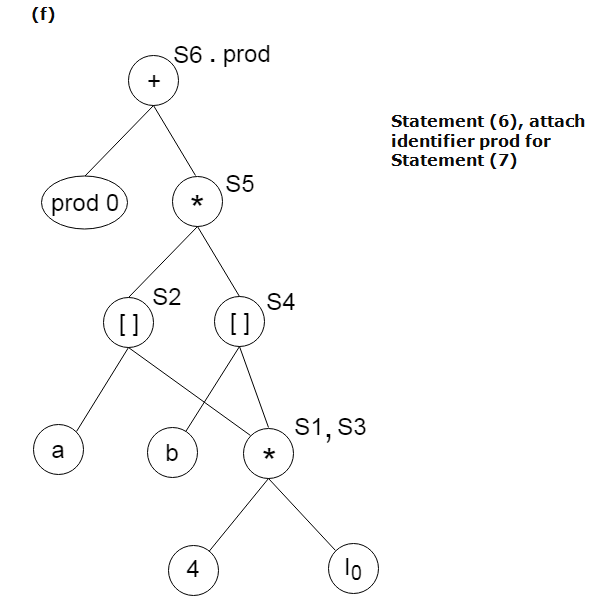
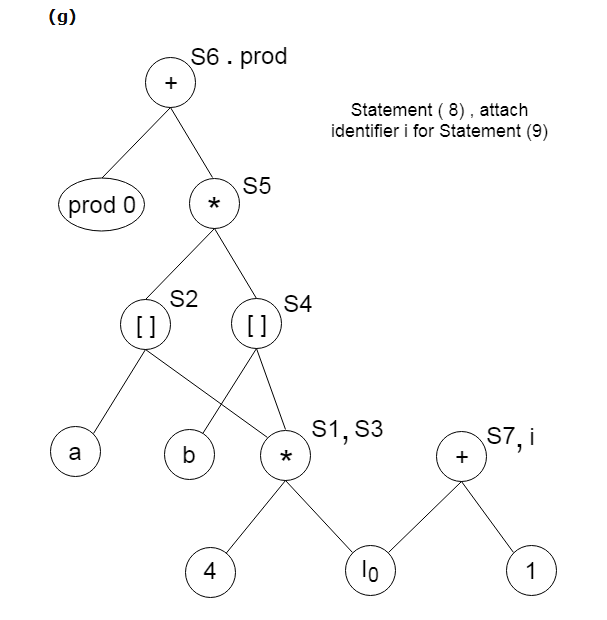
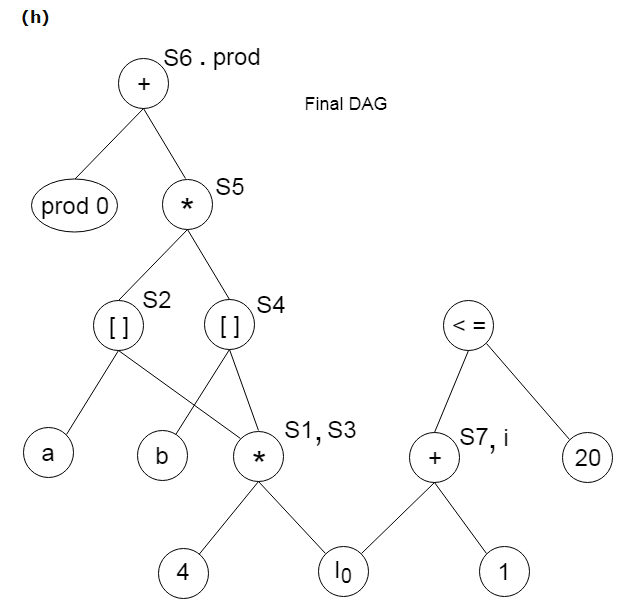
Next TopicData Flow Analysis
